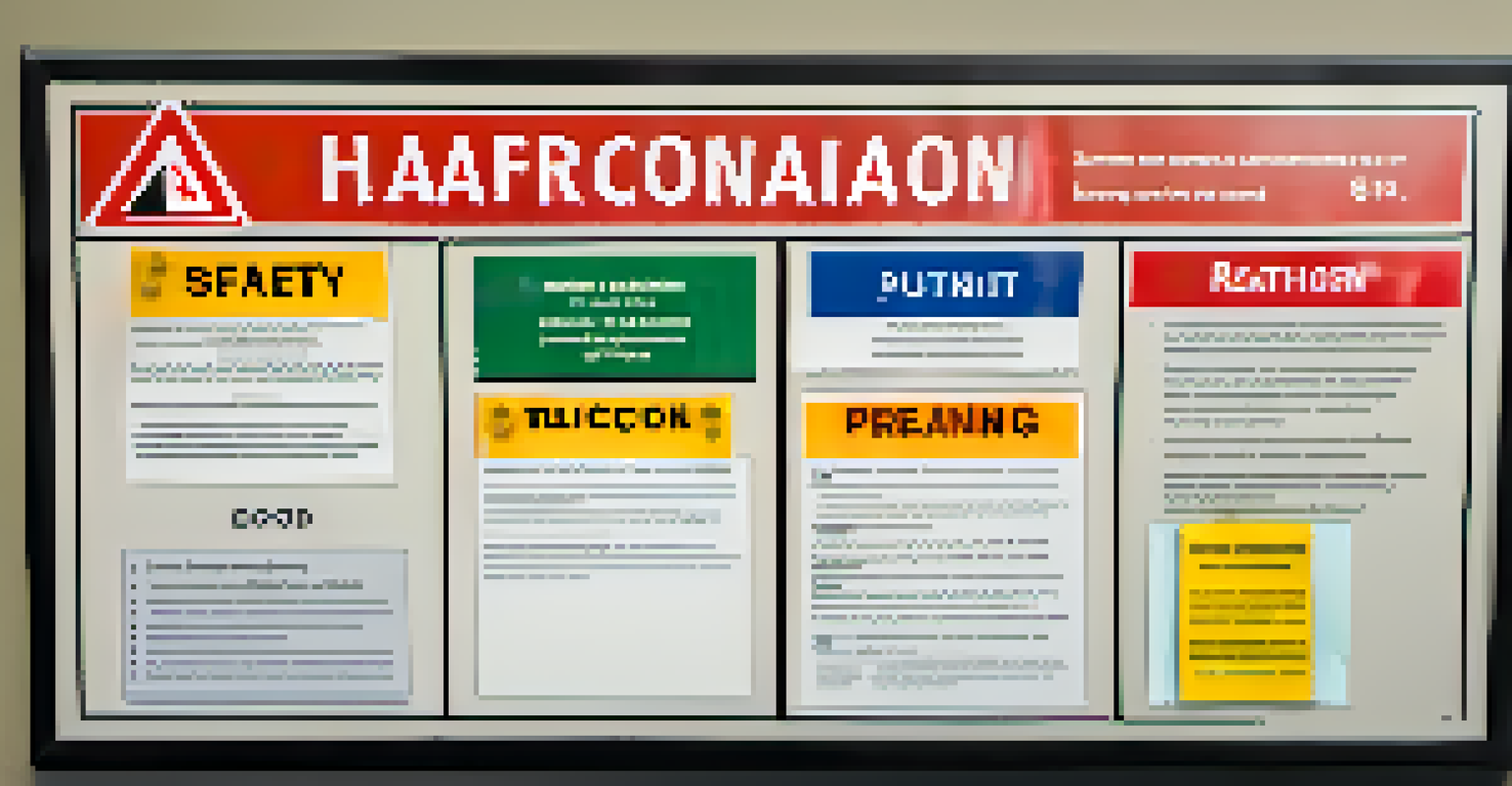Understanding OSHA Regulations for Workplace Safety

What is OSHA and Why is it Important for Workers?
The Occupational Safety and Health Administration (OSHA) was established to ensure safe working conditions across various industries. It plays a crucial role in protecting workers' rights and health, making it a fundamental component of workplace safety. Understanding OSHA is essential for both employers and employees, as it outlines standards that help prevent work-related injuries and illnesses.
Safety isn't just a slogan, it's a way of life.
OSHA's regulations cover a wide range of issues, from chemical exposure to machinery safety, and they apply to most private sector employers. By adhering to these regulations, workplaces can foster a safer environment, reducing the likelihood of accidents. This not only protects employees but also helps employers avoid costly fines and litigation.
Moreover, a culture of safety bolstered by OSHA standards can enhance employee morale and productivity. When workers feel secure in their environment, they are more likely to focus on their tasks, leading to better overall performance for the organization.
Key OSHA Regulations Every Employer Should Know
OSHA regulations are extensive, but several key standards stand out for their importance in maintaining workplace safety. For instance, the General Duty Clause requires employers to provide a workplace free from recognized hazards, which lays the foundation for all other regulations. This means that if there are known dangers, employers must take steps to mitigate them.

Another significant regulation is the Hazard Communication Standard, which mandates that employers inform workers about hazardous chemicals they may encounter. This includes labeling, safety data sheets, and training on safe handling practices. By following these guidelines, employers can empower their employees to make informed decisions about their safety.
OSHA Ensures Workplace Safety
The Occupational Safety and Health Administration (OSHA) is essential for protecting workers' rights and health by setting standards to prevent work-related injuries.
Additionally, the Personal Protective Equipment (PPE) standard requires employers to provide the necessary gear to protect workers from specific hazards. This could include gloves, helmets, goggles, and more, depending on the job. Familiarizing oneself with these regulations can significantly enhance workplace safety.
How to Identify Hazards in the Workplace
Identifying hazards is a crucial step in maintaining a safe workplace. Employers should conduct regular inspections and observations to spot potential risks that could harm employees. This process often involves assessing the environment, equipment, and work practices to uncover hidden dangers.
An ounce of prevention is worth a pound of cure.
Involving employees in hazard identification can be particularly effective, as they are often the first to notice unsafe conditions or practices. Creating an open line of communication encourages workers to report hazards without fear of retribution. This collaborative approach not only enhances safety but also fosters a sense of community within the workplace.
Using tools like checklists and safety audits can aid in systematic hazard identification. These resources help ensure that no area is overlooked and that all potential risks are addressed promptly. By keeping a proactive stance on hazard identification, employers can prevent accidents before they happen.
The Importance of Employee Training on Safety Protocols
Employee training is vital when it comes to effectively implementing OSHA regulations. Proper training ensures that workers understand the hazards they may face and know how to protect themselves. This could involve everything from using equipment safely to recognizing emergency procedures.
Regular safety training sessions not only keep employees informed but also demonstrate an employer’s commitment to their wellbeing. This can enhance job satisfaction and encourage a culture of safety within the organization. When workers feel equipped with knowledge, they are more likely to take responsibility for their own safety and that of their coworkers.
Key Regulations for Employers
Understanding crucial OSHA regulations, like the General Duty Clause and Hazard Communication Standard, is vital for employers to maintain a safe working environment.
Moreover, OSHA requires certain types of training depending on the industry and job functions. Staying compliant with these training requirements not only avoids penalties but also reinforces the importance of safety in the workplace. Continuous education can create a lasting impact on maintaining a safe work environment.
How to Report Unsafe Conditions to OSHA
If you encounter unsafe conditions at work, it's essential to know how to report them to OSHA. The first step is often to address the issue directly with your employer, as they may be unaware of the hazard. Open communication can sometimes lead to immediate corrective action, making your workplace safer for everyone.
If the issue persists or if you feel that reporting to your employer is not an option, you can file a complaint with OSHA. This can be done online or by submitting a written complaint. It’s important to provide as much detail as possible about the unsafe conditions, including the nature of the hazard, the location, and any attempts made to resolve the issue.
OSHA takes these complaints seriously and will investigate them to ensure compliance with safety regulations. Remember, it's your right as a worker to report unsafe conditions without fear of retaliation. Knowing this can empower employees to advocate for their safety and that of their colleagues.
The Role of Inspections in Ensuring Compliance
OSHA inspections are a key component of enforcing workplace safety regulations. These inspections can be triggered by various factors, including employee complaints, workplace accidents, or routine checks. During an inspection, OSHA representatives assess compliance with safety standards and identify any areas that require improvement.
Employers should view inspections as an opportunity rather than a threat. A successful inspection can validate their commitment to safety and highlight areas of strength within their safety program. On the other hand, if violations are found, it serves as a wake-up call to address any shortcomings before they lead to serious incidents.
Importance of Employee Training
Regular training on safety protocols is crucial for employees to effectively recognize hazards and take responsibility for their safety and that of their coworkers.
It's also important to prepare for inspections by ensuring that safety protocols are in place and that employees are trained to follow them. Having comprehensive documentation readily available can also streamline the inspection process, showcasing the employer's dedication to maintaining a safe work environment.
Staying Updated on OSHA Regulations and Changes
OSHA regulations are not static; they evolve over time to address new workplace hazards and improve safety standards. Staying updated on these changes is crucial for both employers and employees to ensure ongoing compliance and safety. Regularly checking OSHA's website or subscribing to their newsletters can provide valuable insights into any new regulations or amendments.
Employers can also attend workshops or training sessions that focus on OSHA updates. These opportunities not only inform businesses about regulatory changes but also foster a culture of continuous improvement in workplace safety. By prioritizing education around OSHA regulations, companies can stay ahead of the curve.

Additionally, engaging with industry associations can help businesses stay informed about best practices and emerging safety trends. This proactive approach not only ensures compliance but also demonstrates a commitment to creating a safe and healthy work environment.